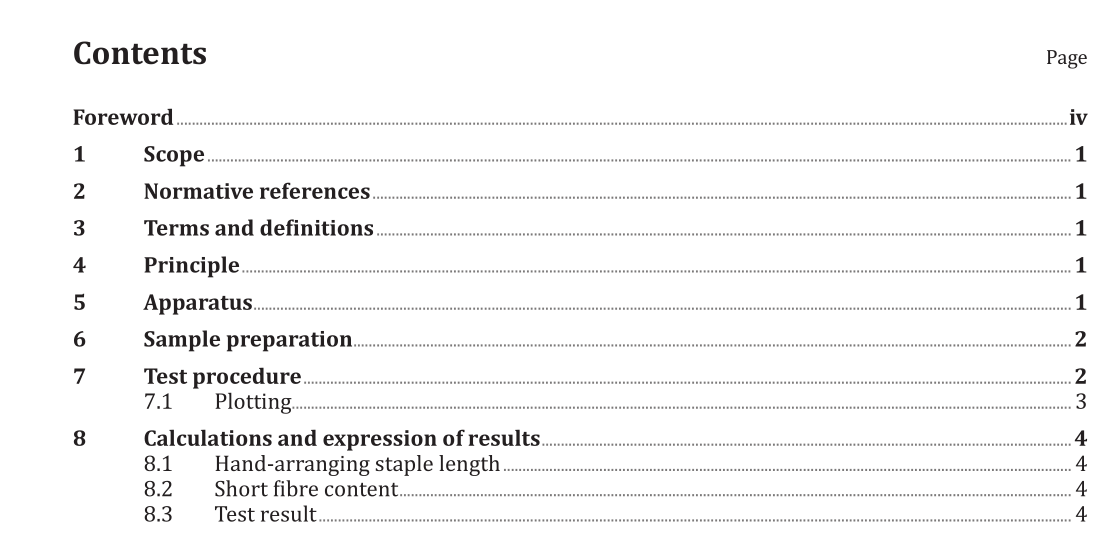ISO 18596:2015 pdf download.Test method for staple length of dehaired cashmere — Hand-arranging method
1 Scope
This International Standard specifies a test method for a staple length of dehaired cashmere by a hand-arranging method.
This International Standard is also applicable to dehaired camel, dehaired yak, etc.
2 Normative references
The following documents, in whole or in part, are normatively referenced in this document and are indispensable for its application. For dated references, only the edition cited applies. For undated references, the latest edition of the referenced document (including any amendments) applies.
ISO 139, Textiles — Standard atmospheres for conditioning and testing
3 Terms and definitions
For the purpose of this document, the following terms and definitions apply.
3.1 dehaired cashmere
cashmere which has been scoured and dehaired
3.2 hand-arranging staple length
average fibre length measured on the length distribution graph which is arranged uniformly with fibres
3.3 short fibre content
number of fibres equal to or less than 15 mm in length as a percentage of the total number of fibres
4 Principle
Fibres are uniformly arranged onto a length distribution graph on a flannelette board. The length values are measured at 10 mm intervals. The weighted mean of these length values is called the hand-arranging staple length.
5 Apparatus
5.1 Flannelette board, covered with black knit flannelette (polyester fibres, 150 g/m 2 to 250 g/m 2 fabric weight).
5.2 Tweezers.
5.3 Steel plate rulers, with the minimum scale of 0,5 mm.
5.4 Coordinate papers, with the minimum scale of 1 mm.
6 Sample preparation
6.1 Lot sample
6.1.1 Proportion and amount
Randomly draw samples from each bale if the total number of bales in the lot is five or fewer.
If the number of bales in the lot exceeds five bales, draw samples from 20 % of the additional number of bales. Quantities less than one bale are counted as one bale. The total mass of the lot sample shall not be less than 300 g.
6.1.2 Sampling
Randomly select and draw samples from the top, middle and bottom positions, deeper than 15 cm from the outermost bale surface.
6.2 Laboratory sample
Spread out the lot sample on the test table and blend it by hand into a homogeneous state. Then divide it into two equal parts. One is the laboratory sample, and the other is retained as a spare.
6.3 Test specimen
Randomly draw 0,09 g to 0,15 g of fibres from each side of the laboratory sample at different positions (from no fewer than 40 positions). Mix these fibres well, then divide them into three equal parts. Two parts are used in parallel tests, the third is retained as a spare test specimen.
6.4 Atmospheres for conditioning and testing
Atmospheres used for conditioning and testing shall be in accordance with ISO 139. All the samples shall be conditioned for a minimum of 24 h immediately before testing and remain conditioned during testing.
ISO 18596:2015 pdf download
